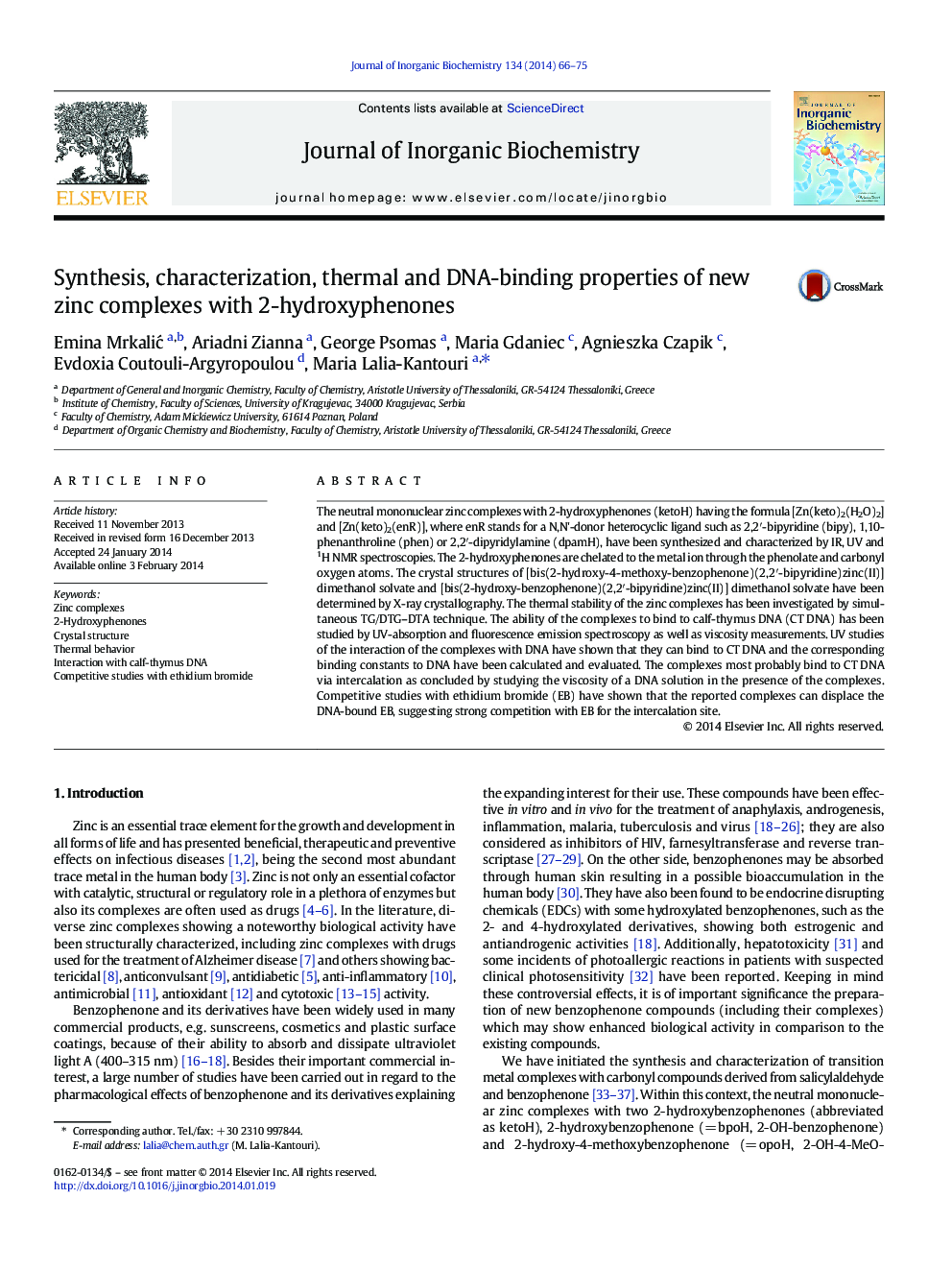| کد مقاله | کد نشریه | سال انتشار | مقاله انگلیسی | نسخه تمام متن |
|---|---|---|---|---|
| 1315934 | 1499453 | 2014 | 10 صفحه PDF | دانلود رایگان |

• Synthesis of [Zn(keto)2(H2O)2] and [Zn(keto)2(enR)] complexes.
• The crystal structures of two complexes have been determined.
• Thermal stability of five complexes has been investigated.
• Intercalation is the most possible binding mode of the complexes to DNA.
The neutral mononuclear zinc complexes with 2-hydroxyphenones (ketoH) having the formula [Zn(keto)2(H2O)2] and [Zn(keto)2(enR)], where enR stands for a N,N'-donor heterocyclic ligand such as 2,2′-bipyridine (bipy), 1,10-phenanthroline (phen) or 2,2′-dipyridylamine (dpamH), have been synthesized and characterized by IR, UV and 1H NMR spectroscopies. The 2-hydroxyphenones are chelated to the metal ion through the phenolate and carbonyl oxygen atoms. The crystal structures of [bis(2-hydroxy-4-methoxy-benzophenone)(2,2′-bipyridine)zinc(II)] dimethanol solvate and [bis(2-hydroxy-benzophenone)(2,2′-bipyridine)zinc(II)] dimethanol solvate have been determined by X-ray crystallography. The thermal stability of the zinc complexes has been investigated by simultaneous TG/DTG–DTA technique. The ability of the complexes to bind to calf-thymus DNA (CT DNA) has been studied by UV-absorption and fluorescence emission spectroscopy as well as viscosity measurements. UV studies of the interaction of the complexes with DNA have shown that they can bind to CT DNA and the corresponding binding constants to DNA have been calculated and evaluated. The complexes most probably bind to CT DNA via intercalation as concluded by studying the viscosity of a DNA solution in the presence of the complexes. Competitive studies with ethidium bromide (EB) have shown that the reported complexes can displace the DNA-bound EB, suggesting strong competition with EB for the intercalation site.
Zinc complexes of the formulae [Zn(keto)2(H2O)2] and [Zn(keto)2(enR)] with 2-hydroxyphenones (ketoH) and N,N′-donor ligands (enR) have been synthesized and characterized. The complexes bind tightly to CT DNA probably by intercalation and compete with ethidium bromide for the intercalation site of DNA.Figure optionsDownload as PowerPoint slide
Journal: Journal of Inorganic Biochemistry - Volume 134, May 2014, Pages 66–75